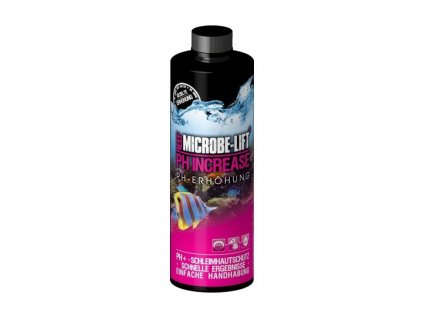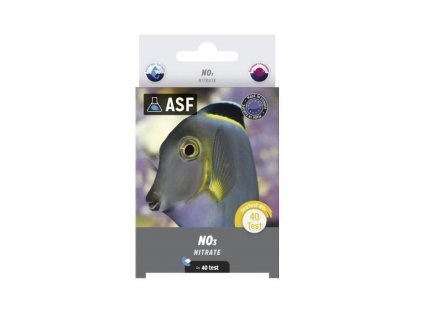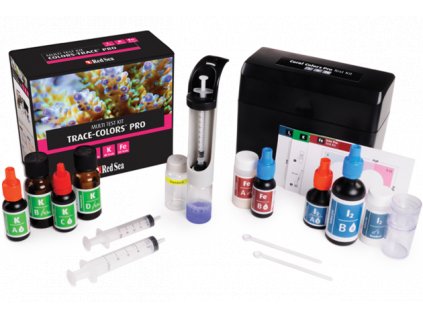Test Kh/Ph ROYAL NATURE PH AND KH PROFESSIONAL TEST
Kód: RN3005



Související produkty
Detailní popis produktu
dKH a pH spolu velmi souvisejí. Ve slané nádrži je mnoho forem života, které absorbují uhličitany. Jednou z nich jsou vápenaté řasy. Neustálou spotřebou se tyto uhličitany, které jsou zodpovědné za náš pufrovací systém alkality, vyčerpávají, což okamžitě vede k vyšší kyselosti, která způsobuje pokles pH. Tento kritický vztah mezi pH a dKH je třeba pravidelně zjišťovat. Přidáváním práškového nebo tekutého hydrogenuhličitanu sodného Royal se postaráme o to, aby se naše uhličitany pohybovaly v rozmezí 8-10 dKH, a tím udržujeme pH na požadované úrovni 8,2-8,4. pH v mořském akváriu by se mělo zvyšovat velmi pomalu, nejlépe ne více než o 0,1 v průběhu 24 hodin. Z tohoto důvodu jsme vyvinuli tento výkonný nástroj Royal pH a dKH profesionální testovací soupravu, která vám dává možnost měřit dKH a pH v jednom kroku. Pokud dKH měříte neustále den po dni, jak by to mělo být, pak ve stejném čase a bez dalších kroků získáte také hodnoty pH, a to pouhým dodatečným pohledem do jiné tabulky. Tento test vám dá jistotu, že je ve vaší nádrži zachována rovnováha mezi dKH a pH a není přerušen růst skeletu korálů. Kromě toho je tento test zásadní pro to, abyste se ujistili, že je váš digitální pH metr kalibrovaný.
Pokyny k testu
Každá sada vám poskytne 150 testů.
Pomocí 5ml injekční stříkačky přidejte do testovací lahvičky 5 ml akvarijní vody.
Pozor: Před jakýmkoli použitím testovací lahvičky se ujistěte, že je vypláchnutá pouze vodou RO a vysušte ji měkkým papírem.
Pomocí 1ml injekční stříkačky pevně nasaďte kovovou jehlu.
Nabírejte roztok dKH/pH, dokud se černá část stříkačky nenachází u značky 1,00 ml.
- Před tímto krokem se ujistěte, že je kovová jehla zbavena tekutin a že je po celou dobu ponořena ve vodě, aby se do stříkačky nedostal vzduch.
- Přítomnost malé vzduchové bubliny mezi kapalinou a černou částí stříkačky je normální a neovlivní výsledek.
Začněte přidávat roztok dKH/pH do zkušební lahvičky.
- Věnujte pozornost tomu, že během titrace budete pozorovat dvě barevné změny: z růžové na zelenou a ze zelené na žlutou (viz obrázek).
- Po prvním nakapání získáte roztok s růžovou barvou, která bude tmavnout.
Pokračujte v přidávání roztoku dKH/pH po kapkách do zkumavky, dokud se barva nezmění z růžové na šedou (první bod VpH).
- Po každé kapce trochu vířete.
- Správný bod je šedá barva bez růžového nebo zeleného tónu (přidání další kapky do roztoku by mělo přidat zelený tón k šedé).
Odečtěte polohu černé části stříkačky pro hodnotu VpH (každé dělení odpovídá 0,01 ml).
Pokračujte v přidávání roztoku dKH/pH po 5-8 kapkách, dokud se zelená barva roztoku nezjasní, pak přidávejte po kapkách, dokud nezískáte olivovou barvu (druhý bod VdKH).
- Dávejte pozor, aby správná barva byla olivová a ne zcela žlutá.
Odečtěte polohu černé části stříkačky pro VdKH (každé dělení odpovídá 0,01 ml).
(pro stanovení alkality použijte dva horní řádky tabulky) Pro stanovení alkality porovnejte získanou hodnotu VdKH pomocí tabulky
- Typické hodnoty alkalinity v akváriu se pohybují v rozmezí 7-11dKH.
Pro stanovení pH budete potřebovat hodnoty VpH i VdKH. Zjistěte naměřenou hodnotu VpH v levém sloupci tabulky a VdKH v horním řádku. Najděte průsečík přímky s pravým VpH a sloupcem pod naměřenou hodnotou VdKH a odečtěte hodnotu pH. Typické hodnoty pH v akváriu se pohybují v rozmezí 7,6 a 8,4.
Příklad:
Podle titrace bylo zjištěno, že VpH je 0,72 ml a VdKH je rovno 0,05 ml. V tomto případě je alkalita ve vašem akváriu 11,4 a pH se rovná 8,43 (viz obrázek).
Doplňkové parametry
| Kategorie: | Testy Royal Nature |
|---|---|
| EAN: | 7290013698315 |
Buďte první, kdo napíše příspěvek k této položce.
- Je výrobcem prémiových produktů pro mořská akvária.
- Její cílem je vytvářet produkty, které napodobují přírodní mořskou vodu (NSW).
- Produkty jsou výsledkem vlastního výzkumu a vývoje a jsou navrženy tak, aby podporovaly zdravý růst korálů a ryb.
- Společnost nabízí mimo jiné i bakterie pro start a péči o mořské akvárium, které pomáhají s biologickou rovnováhou.
| Výrobní společnost : | Royal Nature |
|---|---|
| Adresa : | 11 Hate'ena St. Nesher 3686411 , Izrael info@royalnature-reef.com |
| E-mail : | info@royalnature-reef.com |







